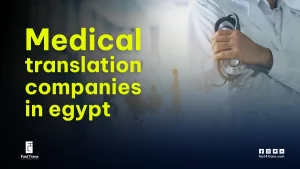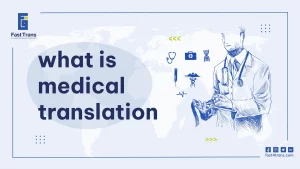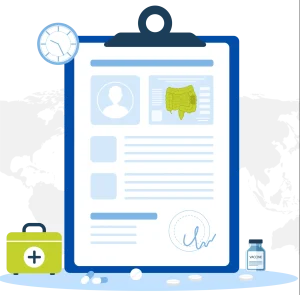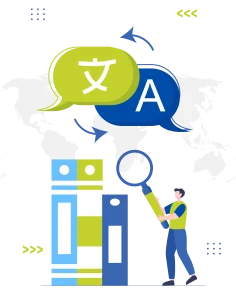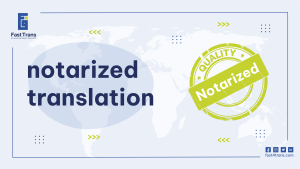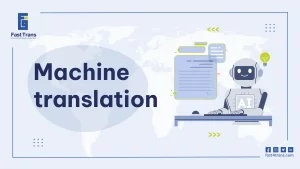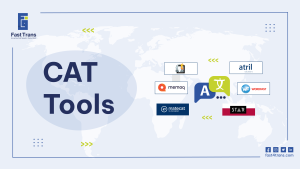Translation software began in the 20th century, and it has been evolving ever since. You might have heard of the famous CAT tools, and their groundbreaking feature ‘Translation Memory’ but don’t quite understand the concept behind it.
Translation Memory (TM) stores past translations for reuse, boosting Arabic translation efficiency and consistency. TMs analyze Arabic text, finding matches with existing translations, whether perfect or fuzzy. This streamlines the process, reduces costs, and speeds up delivery. By ensuring consistent terminology and leveraging previous work, TMs are essential tools for professional Arabic translation.
What is translation memory?
First things first, a translation memory (TM) is a database that stores translated language pairs. These pairs are referred to as ‘segments’ or translation units. They can be anything from full sentences, phrases, words, or paragraphs.
Translation memory is recurrent in the context of translation software like CAT tools. The main purpose of TM is to store translations for future use. This makes the task easier for translators because they no longer need to repeat recurrent translations. It’s also important to maintain consistency throughout translation.
It is a tool that very few translators can live without.
How does Translation Memory Usage in Arabic Translation work?
When an Arabic translator uploads a file into the translation management system (TMS) or CAT tool, it gets segmented, and analyzed by the translation memory.
Doing what computers do best, the TM sees in the Arabic text similarities to what is already stored in its database. It retrieves these Arabic translations and suggests them for the translator to use, edit, or disregard.
Sounds simple! But how does the TM find those similarities?
How does TM Find Matches?
Similarities are referred to as ‘matches’. In finding matches between segments pre-saved in the TM and newly uploaded Arabic translation files, the TM uses Perfect and Fuzzy matches.
1. Perfect Matches
The segment in the newly uploaded Arabic source file is identical to that stored in the TM.
2. Fuzzy Matches
The Arabic source text segment matches parts of the one present in the TM. The higher the percentage of the fuzzy match, the more accurate the match is.
What are the benefits of Translation Memory Usage in Arabic Translation?
Translation Memory (TM) boosts Arabic translation quality by ensuring terminological consistency, crucial for complex technical content. It also reduces costs and turnaround time by leveraging previously translated segments, optimizing efficiency for the intricacies of the Arabic language.
1. Consistency
Without a TM, it would be hard for Arabic translators and editors to maintain consistency. Humans, unlike software, often fail to recall how a certain word or sentence was translated months or years ago, especially with the nuances of the Arabic language.
TMs can recall data no matter how old it is. This is crucial for ensuring a better user experience for Arabic readers, especially for those reading highly technical Arabic content that can’t afford inconsistency or variations in terminology.
2. Cost-Saving
For businesses, TMs help reduce the Arabic translation rate because if one source document gets scanned for having many repetitions, then the translator will not exert much effort translating it, and therefore, their rate could be discounted because the TM already took care of the rest. This is particularly beneficial with the sometimes lengthy and complex nature of Arabic sentence structures.
Consequently, a translation memory also leads to faster turnaround time for Arabic projects and higher revenue.
3. Time-Saving
The translation memory allows for faster turnaround of Arabic translations. This means accepting more projects from clients more often.
For businesses, this means getting Arabic translation work done quickly, especially with tight deadlines.
How to create a quality translation memory?
High-quality translation memories (TMs) are built with context-rich, linguistically assured translations, checked by automated QA tools and expert editors. Regularly updating the TM with post-translation edits ensures its accuracy and long-term value.
1. Provide Context
To build up a quality translation memory database, translators need to provide quality translations. This could be achieved if clients or companies give them enough context, like who is this translation targeting, or in what medium it will be published.
2. Use automated quality assurance (QA)
To save quality translations to the TM, it needs to be checked for typos, grammar mistakes, and other simple proofreading that comes under the umbrella of Quality Assurance tools.
3. Make linguistic quality assurance
You can take an extra step and get an editor or a linguist to further check the translation for minor mistakes that the QA could miss.
4. Make sure the TM is up to date
When further edits are made to the translation outside the TM, make sure to go and add it so that it is up to date and in sync with all other outside edits.
Someone, probably a highly qualified editor or linguist should be hired to keep the TM up to date, polished, and free of mistakes.
What are some best practices for Translation Memory Usage in Arabic Translation?
Optimize Arabic source text for better Translation Memory (TM) matches, improving consistency and efficiency. Centralizing the Arabic translation team’s TM and CAT tools further streamlines workflows and boosts productivity.
1. Fine-tune the Arabic source text for optimal TM matches
Prior to translation, the Arabic source text is prepared. Optimizing this text to utilize words and phrases already stored in the Arabic translation memory offers several advantages. It increases the number of TM matches, simplifying the translation process, and significantly improves consistency, especially crucial for technical Arabic texts.
2. Centralize your Arabic translation team’s work
Is it more effective for each team member to use their preferred CAT tool and translation memory, or for everyone to work with the same TM and CAT software? Unifying the team’s tools and resources streamlines efforts and dramatically boosts overall productivity in Arabic translation projects.
How does TM differ from Machine Translation?
At this point you might ask, what is the difference between machine translation, and translation memory?
Both of them work differently, have different benefits, and achieve different results. Take a look at the below table:
| Translation Memory (TM) | Machine Translation (MT) |
| Depends on human attempted translation. | The machine does all the translation. |
| Suggests translations when there is an exact or a similar match. | Handles the entire text or document. |
| Can always be edited and updated by editors. | The translation by the machine is final, and MTPE edits are done by professional translators. |
| Enhances accuracy and consistency | Entails many contextual errors and difficulties with accuracy |
| The more you translate, the more the TM grows and becomes helpful | Instant results |
| It can be found in CAT tools like Trados, and MemoQ | Examples: Google Translate, Reverso |
How does Fast Trans use translation memory to boost its productivity?
As established above, a translation memory is crucial for all parties included in a translation project. In Fast Trans, we make the most of our efforts and the least of our clients’ time and money. This is achieved in numerous ways, on top of it are translation memories.
At Fast Trans, we’re always keeping translation memories up to date, and making sure we introduce the latest translation software suitable for the needs of our clients.
Reach out to get instant help from our large team of certified translators now.
We covered the same topic in Arabic, feel free to check it by clicking here
Conclusion
Translation Memory (TM) is a powerful database that stores previously translated language segments, from words to paragraphs, for reuse in future projects. In Arabic translation, TMs are invaluable for maintaining consistency, especially with the language’s complex grammar and terminology. When an Arabic text is uploaded to a CAT tool, the TM analyzes it, seeking matches with existing translations. These matches can be perfect or fuzzy, with the latter offering suggestions based on similarity. By leveraging these stored translations, TMs streamline the Arabic translation process, reduce costs, and improve turnaround times.
The benefits of TM usage in Arabic are numerous. Consistency is paramount, ensuring that technical terms and phrases are translated uniformly across documents, crucial for Arabic’s nuanced vocabulary. Cost savings are achieved as translators spend less time on repeated segments, and faster turnaround times allow for quicker project completion. Creating a high-quality TM involves providing context-rich translations, using quality assurance tools, and regularly updating the database. Best practices include optimizing the Arabic source text for better matches and centralizing the translation team’s TM for streamlined workflows. Unlike machine translation, which generates new translations automatically, TMs rely on human-created translations, making them essential tools for professional Arabic language work.



